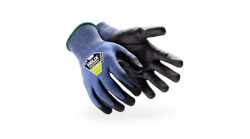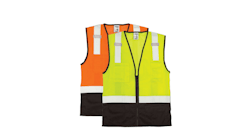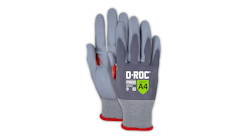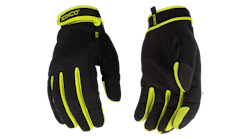One size doesn’t always fit all and Ergodyne understands that.
When Ergodyne announced its new bump cap product line in July, Erodyne President and CEO Tom Votel said, “The conversation around diversity, equity and inclusion (DEI) has significantly evolved in the workplace, and our newest PPE solutions not only reflect this evolution but are designed to drive it, ensuring no worker is left behind when it comes to safety.”
Tim Gallant, Ergodyne product director, described the old, go-to for bump caps as something that looks like a baseball hat or a brimmed jockey helmet with some kind of protection built into it.
“Those just don’t fit everyone,” Gallant said. “It becomes very difficult for companies to fully implement a head protection program when they can’t legitimately say they have a piece of head protection that fits everyone on staff.”
The new generation of bump caps from Ergodyne fit a wider range of head sizes and hairstyles, especially dreadlocks and ponytails.
Leading off the new product line is the Skullerz 8943F(x) Universal Hinged Bump Cap Insert. The front and rear wings of the bump cap insert flex in and out, while the hinged back makes more room for hair. Made of lightweight, durable polyethylene, the Skullerz 8943F(x) fits into a baseball hat and other headwear to protect against bumps, scrapes, bruises and other minor injuries. If further customization is needed to fit a hat, the insert can be trimmed to fit.
Bump caps provide protection from “worker-generated impact.” Examples in aviation include an aircraft maintenance technician working underneath a wing, then standing up and hitting their head on the wing or bumping into something with a sharp edge.
Ergodyne’s new bump cap insert design is the result of a collaboration with ramp workers from a major airline and can be found in four solutions:
- Skullerz 8941 Mesh Dreadlock Tube and Bump Cap Insert
- Skullerz 8947 Lightweight Baseball Hat and Bump Cap Insert.
- Skullerz 8948 Mesh Do Rag Bandana and Bump Cap Insert
- Skullerz 8957 Lightweight Ranger Hat and Bump Cap Insert
All hats have removable inserts and are available in black. The baseball hat is also available in lime green and navy blue. Both the baseball cap and ranger hat have reflective safety accents.
According to Gallant, the question that led to the new designs was: Who are the folks that we need to make accommodations for as we try to implement a program?
“That lead to ‘we have some very real needs that are pervasive across the organization’ that need to be addressed,” he said. “It then became less about individual accommodations and more about what can be developed to satisfy this smaller percentage of the population, but still a very real percentage of people just trying to stay safe at work.”
For more than a decade, Ergodyne has been working to address two primary concerns: fit and warmth. “What that has meant practically is we’ve been adding more and more venting, while not sacrificing the impact protection, and designing more and more points of flexibility into the product as well,” he continued.
“With this most recent design, in addition to amping up the amount of flexibility that we’ve built into it, we also created a product that flexes to be much larger and flexes down to be smaller.”
Gallant compares the hinged insert to a metal vegetable strainer that opens and closes like a flower.
By partnering with an airline who is implementing a head protection program, he said Ergodyne was able to bring in 20 or so ramp workers who provided input for the design. “We did small trials to make sure we were delivering on their needs, which mostly focused on head shape, hairstyle and head size,” he said. “The base product that we had prior to this round of development does its job in terms of providing protection. The main exercise for the 8943F(x) was about how to make sure it fits as many people as possible.”
Another feature to talk about is venting, which provides airflow to carry perspiration and heat away from the head.
“Across all of these products, we use either laser-perforated materials that have a lot of venting or a nice moisture-wicking, stretchable mesh,” he said, the venting is a patented feature designed that’s been accepted by the market quite well.
“If it’s not comfortable, someone isn’t going to wear it. If someone has their favorite hat that they want to wear and there’s not a uniform concern on the part of their employer, we’re just adding protection to their existing hat.”





